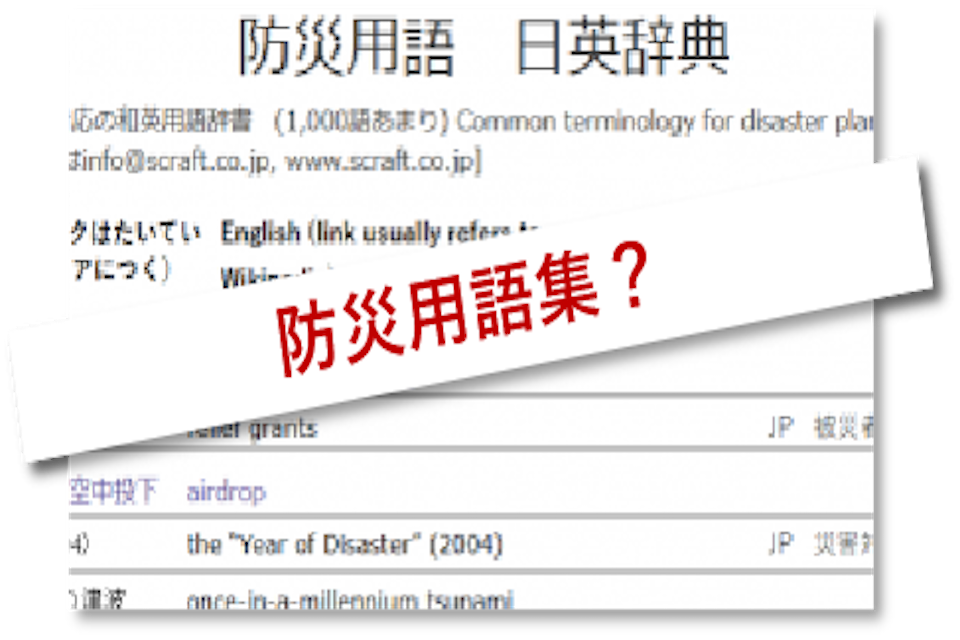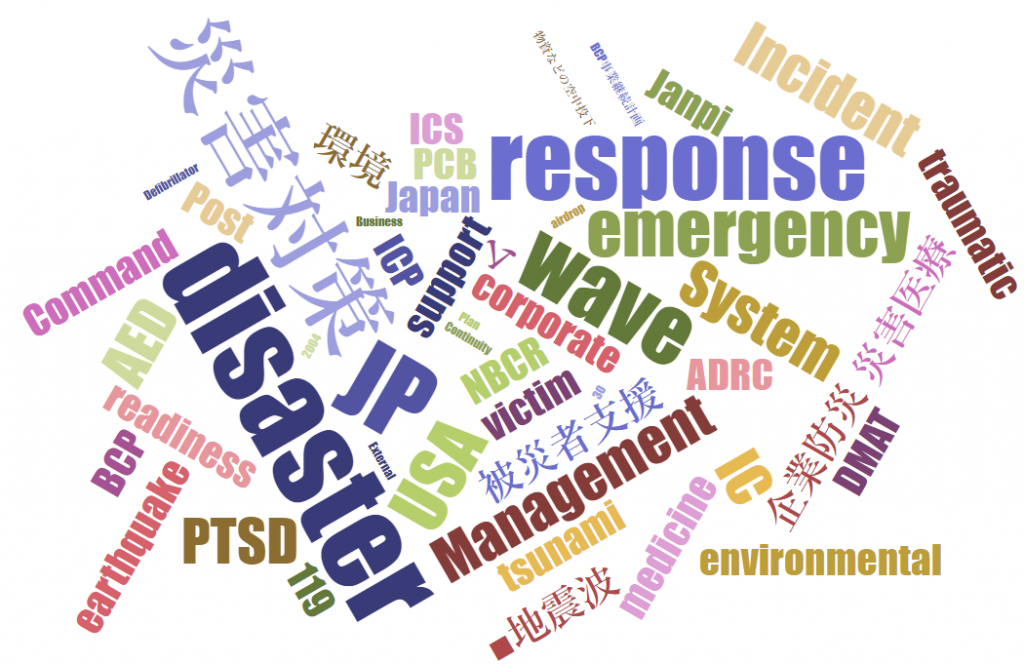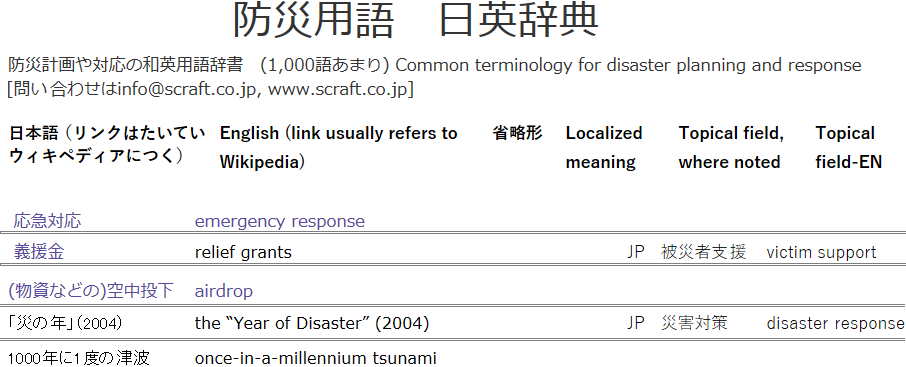03-6272-4372営業時間 9:00〜18:00
防災メディア

Clear communication, J-E glossary for disaster management
2017/08/01
Within a single country and language, it is important to agree on the words and their meanings for daily conversation, of course, but especially among technical experts and professionals like disaster responders (police, fire, ambulance, and auxiliary volunteer groups with training such as the Citizen Emergency Response Teams, CERT, in many parts of USA, for example). During the September 2001 terrorist attacks in USA the lack of common radio equipment and universal terminology was a big communication problem. Now the equipment is interoperable, but still there is more effort needed to make the conversations short, simple, and clear (Plain English, minimal technical terms). And to share data another effort is needed to agree on the meanings and labels (metadata) for all users to understand and use in their databases and GIS pictures.
The same danger of broken communication also is possible between two different countries and languages. So it is important to agree on the words and their meanings, for example when taking English texts and changing to Japanese; or the reverse, when taking Japanese texts and changing to English. Until now there have been a few authoritative online documents or websites that give their own glossaries, but one source might or might not agree with the other source.
Here at ScienceCraft we have consulted a wide collection of documents to come up with the online 用語辞書 (yougo jisho, dictionary for common usage) for disaster planning and emergency management: FEMA’s glossary at the EMI (Emergency Management Institute), the UNISDR lists of terminology on disaster risk reduction, Japan’s Cabinet Office for Disaster Management (bi-lingual policies for disaster preparedness, 日本の災害対策), and the hazardlab.jp webpages of word lists (防災用語集), among others. The list of words is sorted alphabetically and will be updated from time to time. In some cases the source word is rooted to the specific social environment of that language. When there is a local or special meaning like this, no translation is very good. An example from USA is “Chief Risk Officer.” Or in Japan there is the word “J-Anpi” which is a system of electronic reporting one’s safety or distress. These cases are marked in the glossary. Many of the words also have hotlinks to Wikipedia (in Japanese or English), where available online.
Who will benefit from the list of common equivalent terms for Japanese and English? One group of users is students of disaster sciences and emergency management. They can download and study the lists. Other groups of users are the people who seek the best Japanese word for an English concept or technical term they discovered; or the reverse. Maybe the person does not know the best English word for something from a Japanese source that is going to be published for foreigners to use. By using the words from this online list, all the various users will have a common body of terms to communicate with minimum confusion. Finally, there is a group of users who may want to create their own document to use locally. They can download and edit this online glossary as a starting point.
In the end, the effort to standardize the language of disaster planning and emergency management makes possible clear, high quality communications among the various professionals in one country or language, but also between two different languages. Hopefully the “common usage” 用語辞書 project online at ScienceCraft will raise the quality and clarity of communication between groups or individual professionals, offices, and the many layers of government.

Word cloud for DISASTER RESPONSE, courtesy of wordcloud.booogle.net
サイエンスクラフトとは...
サイエンスクラフトは防災計画の作成や防災訓練支援を数十年に渡って行っているコンサル会社です。お問い合わせはこちらまで。





